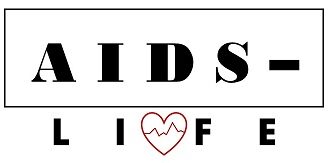What is HIV and AIDS? A complete tour of the human immunodeficiency virus
HIV and AIDS - what is it anyway?
AIDS virus
HIV is a virus that infects cells of the immune system, which protects the human body from disease. The virus destroys a type of white blood cell in the immune system called helper T cells and copies itself inside those cells. Helper T cells are also called CD4 cells.
As HIV destroys CD4 cells and makes copies of itself instead, the person's immune system begins to gradually weaken. Thus, the body of a person infected with the immunodeficiency virus and not taking antiretroviral treatment will find it increasingly difficult to fight off infections and diseases.
If HIV treatment is not treated, it can take ten to fifteen years for the virus to damage a person's immune system so much that it can no longer resist and protect the body from harmful influences. It is worth saying that the rate of HIV progression is individual for each person and depends on age, general health and lifestyle.
The following are facts about HIV that reveal the essence of this disease..
- HIV stands for Human Immunodeficiency Virus;
- people with HIV can enjoy long and healthy lives by taking antiretroviral treatment that is effective and accessible to all;
- The sooner a person with HIV is diagnosed, the sooner treatment will begin. This means that in the long term he will be able to live a full and healthy life;
- Antiretroviral treatment can reduce the level of HIV in the body so low that a blood test cannot detect it. People living with HIV whose viral load is confirmed to be undetectable cannot transmit HIV;
- HIV is transmitted through semen, blood, vaginal and anal secretions and breast milk;
- HIV is not transmitted through sweat, saliva or urine;
- Using condoms during sex is the best way to protect yourself from contracting HIV and other STDs;
- if you inject drugs, always use a clean needle and syringe and never share it;
- If you are pregnant and living with HIV, the virus in your blood can be passed on to your baby during childbirth or breastfeeding. Comprehensive HIV treatment will help reduce the viral load to undetectable and eliminate the risk of infection to the child.
Acquired immunodeficiency syndrome
AIDS is a collection of symptoms (or syndrome as opposed to a virus) caused by HIV. A person is considered to have AIDS when their immune system is too weak to fight infection and they develop certain defining symptoms and illnesses. AIDS is the last stage of HIV, when there is too much infection in the body and if left untreated, it will lead to death.
Basic facts about AIDS:
- AIDS is acquired immunodeficiency syndrome. AIDS is considered an advanced HIV infection or a late stage of HIV;
- AIDS is a collection of symptoms and diseases that develop as a result of progressive HIV infection that destroys the immune system;
- Today, fewer people are getting AIDS due to the availability of HIV treatment, which helps the body stay healthy.
Although HIV medications cannot yet cure a person completely, with the right treatment and support, people living with HIV can live long and healthy lives.
Infection of the body and the life cycle of HIV
HIV infects white blood cells in the body's immune system called T helper cells, or CD4. These vital cells maintain health by fighting infection and disease.
HIV cannot grow or reproduce on its own. Instead, the virus attaches to and fuses with a T helper cell. It then takes control of the cell's DNA, multiplies within the cell, and finally releases more HIV into the bloodstream—continuing the multiplication process. This is the life cycle of HIV .
Thus, HIV weakens the body's natural defenses and, over time, causes serious damage to the immune system. How quickly the virus develops depends on a person's overall health, how soon after becoming infected with HIV they are diagnosed and started on antiretroviral treatment, and how consistently they remain on treatment.
Antiretroviral treatment combines a number of drugs targeting different stages of the HIV life cycle, making it very effective. When taken correctly, it keeps the immune system healthy, prevents the development of symptoms and illnesses associated with AIDS, and helps people live long, healthy lives.
If a person takes medications incorrectly and inconsistently, drug resistance may develop. This means that the medications are no longer able to stop the virus from multiplying.
The following are the stages of the HIV life cycle .
1. Binding and Fusion : The virus attaches to the T helper cell and introduces HIV into the cell.
2. Conversion and integration : Once inside the T helper cell, HIV changes its genetic material in order to enter the cell nucleus and take control of it.
3. Replication : The infected T helper cell begins to produce HIV proteins, which are used to produce more HIV particles inside the cell.
4. Assembly, budding and maturation : New HIV particles are released from the T helper cell into the bloodstream, which infects other cells. Then the process is repeated.
Stages of HIV infection
Let us consider in detail the stages of HIV infection.
Stage 1: acute primary infection. About 1 to 4 weeks after contracting HIV, some people experience flu-like symptoms. They may not last long (a week or two) or may not appear at all. If you feel such symptoms, this does not indicate that you really have HIV.
To accurately diagnose HIV infection, it is necessary to regularly visit medical institutions and undergo periodic tests, especially if you suspect a risk of HIV infection. Remember that in some people the disease may not manifest itself at all for several years.
Stage 2: asymptomatic. After a person has passed the stage of acute primary infection and the process of seroconversion, his health can improve significantly. After the initial impact of the virus on the human body, HIV can enter a stage called clinically latent infection.
In fact, HIV may not cause any other symptoms for 10 or even 15 years (depending on age and overall health). However, the virus will still be active, infecting new cells and making copies of itself. Also, at this stage, HIV can still be transmitted to other people. However, if retroviral treatment is not started, over time, HIV infection will cause serious damage to the immune system.
Stage 3: symptomatic HIV infection . At the third stage of HIV infection, the person’s immune system is already seriously damaged. At this point, the HIV-infected person is more likely to develop serious infections or bacterial and fungal diseases that will be extremely difficult for the body to overcome. Such infections are called " opportunistic infections ". If a person develops serious opportunistic infections or diseases due to advanced stage 3 HIV, AIDS is diagnosed.
Is there a cure for HIV and AIDS?
To date, there is no cure for HIV. However, modern drugs can control HIV, thereby prolonging and improving the quality of life of people living with HIV. Also, with proper treatment, the viral load level decreases to undetectable, which means that HIV becomes undetectable.
If you suspect you have been exposed to HIV, it is important to get tested for HIV as this is the only way to know if you have the virus.
If you have already been tested and the result is positive, you need to start antiretroviral treatment as soon as possible. Treatment is the only way to control HIV and prevent the destruction of the immune system. It also reduces the risk of transmitting HIV to sexual partners and others.



